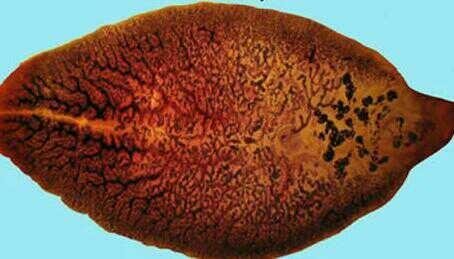Fasciola hepatica

Fasciola hepatica or also called the liver worm is a suction worm (Trematoda) that live as a parasite in mammals (humans & animals). These worms usually live in livestock livestock such as cattle and goats. A cow affected by fasciola hepatica, on average there are 200 more liverworms.
Fasciola hepatica has a length of 2.5 cm and a width of 1 cm, the body is covered by cuticles that serve to keep the body from being digested by its own host. On the front of the body of the liverworm there is a mouth sucker used to suck the food.
Worms have hemaprodite properties, they multiply by fertilizing themselves. In one egg laying, the liverworm can produce hundreds of thousands of eggs. With that many eggs, the liverworm's eggs will come out of the cow's body through the bile ducts, then pass through the intestines and mix with cow dung.
Life cycle of the liver worm is different from the life cycle of insects, although both start from the egg, the liver worm does not experience the process of becoming a pupa like insects. Here is a picture along with an explanation of life cycle of hepatic worms or fasciola hepatica.